Sulfur (S) Nutrient Deficiencies: Causes, Symptoms, and Solutions for Your Plants
Table of Contents
2. Common causes of sulfur nutrient deficiencies in plants
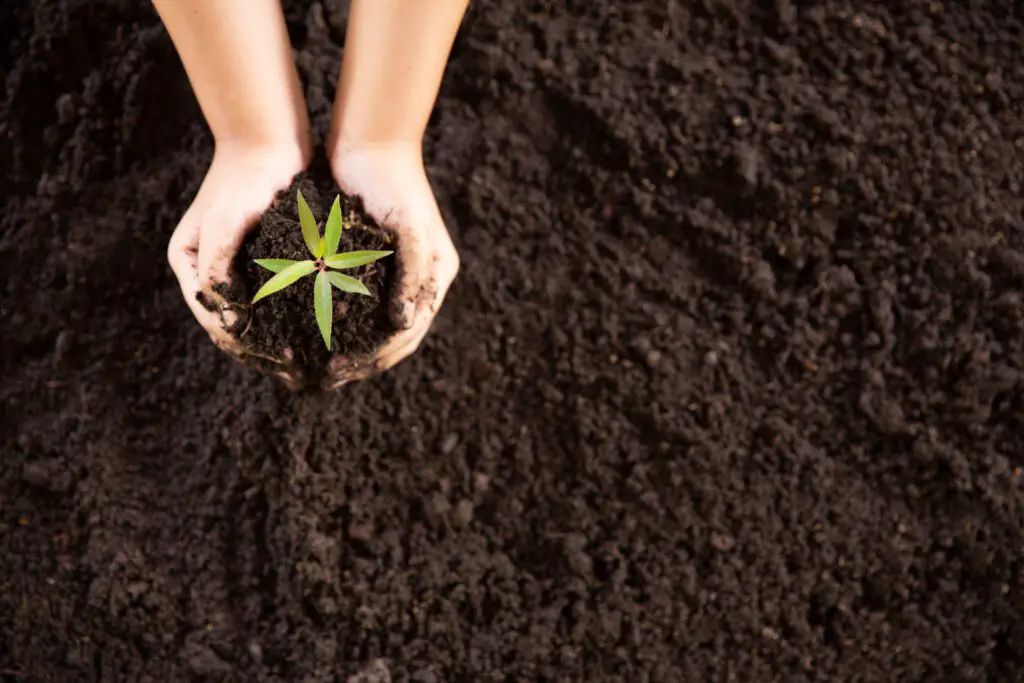
Sulfur is an essential macronutrient that plays a vital role in the growth and development of plants. However, sulfur nutrient deficiencies can occur, affecting the overall health and productivity of plants. There are several common causes of sulfur deficiencies in plants that gardeners need to be aware of.
One major cause of sulfur deficiency is the depletion of sulfur in the soil. Continuous cultivation, leaching, and erosion can lead to a decline in sulfur levels, especially in sandy or low organic matter soils. Additionally, intensive agricultural practices, such as excessive fertilization with nitrogen-based fertilizers, can disrupt the balance of nutrients in the soil and result in sulfur deficiency. It is important for gardeners to regularly monitor and replenish sulfur levels in the soil to prevent deficiencies in plant nutrition.
Another common cause of sulfur deficiency is inadequate sulfur uptake by plants due to specific soil conditions. High soil pH levels, alkaline soils, and excessive liming can reduce the availability and accessibility of sulfur to plants. In such instances, even if sufficient sulfur is present in the soil, plants may struggle to absorb it effectively. It is crucial for gardeners to consider the pH and composition of their soil when addressing sulfur deficiencies and ensure suitable conditions for efficient sulfur uptake by plants.
Addressing these common causes of sulfur nutrient deficiencies in plants is key to maintaining optimal plant health and productivity. By understanding the factors that contribute to sulfur deficiency and implementing appropriate corrective measures, gardeners can ensure that their plants receive the necessary sulfur nutrition for thriving growth and development.
3. Recognizing the early symptoms of sulfur deficiency in plants
Recognizing the early symptoms of sulfur deficiency in plants is crucial for effective plant care and nutrient management. One common symptom is chlorosis, where the leaves turn yellow between the veins. In some cases, the younger leaves may even turn pale green. This discoloration occurs due to the insufficient production of chlorophyll, which is essential for photosynthesis. Another early symptom of sulfur deficiency is stunted growth. Plants lacking sulfur may exhibit reduced overall size and fail to reach their full potential height and width. Additionally, the leaves may appear smaller and more tightly packed than usual.
Moreover, sulfur-deficient plants often display delayed maturity and flowering. The deficiency hampers the proper development of reproductive structures, leading to fewer fruits or flowers. In some cases, the flowers may fail to open fully, resulting in poor pollination and subsequent fruit set. Another telltale sign to watch out for is the presence of dark green veins contrasting with the lighter leaf tissue, known as veinal chlorosis. This symptom occurs due to the higher sulfur demand in veins compared to the rest of the leaf tissue.
Being able to identify these early symptoms of sulfur deficiency in plants is essential for implementing appropriate corrective measures promptly. By staying vigilant and taking preventive action, gardeners and plant enthusiasts can ensure optimal plant health and productivity.
4. How sulfur deficiency affects plant growth and development
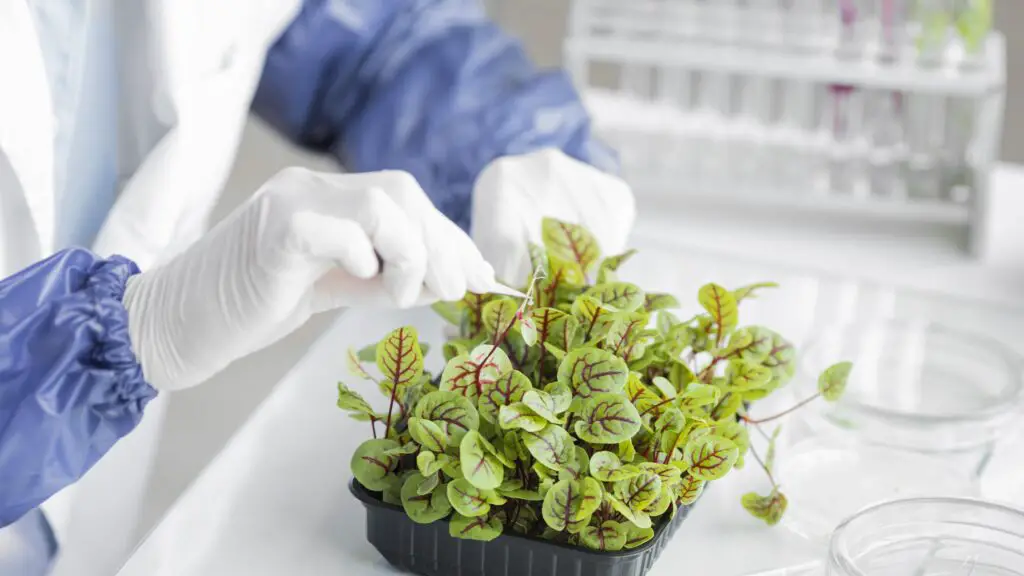
Sulfur is an essential nutrient for plant growth and development, playing a crucial role in various processes within the plant. When sulfur deficiency occurs, it can have detrimental effects on plant health and overall productivity. One of the primary impacts of sulfur deficiency is reduced chlorophyll synthesis, which leads to yellowing of leaves, a condition known as chlorosis. As chlorophyll is responsible for capturing sunlight and converting it into energy through photosynthesis, its deficiency can severely hamper a plant’s ability to produce the necessary energy for growth and reproduction.
In addition to the reduced production of chlorophyll, sulfur deficiency also affects the synthesis of proteins in plants. Sulfur is an essential component of amino acids, the building blocks of proteins. Consequently, inadequate sulfur availability limits the plant’s ability to form proteins, which are essential for numerous functions, including cell division, enzyme activity, and defense mechanisms against stressors. As a result, sulfur-deficient plants may exhibit stunted growth, reduced root development, and increased susceptibility to diseases and pests.
It is crucial to recognize the early symptoms of sulfur deficiency in plants to address the issue promptly. By understanding the detrimental effects of sulfur deficiency on plant growth and development, gardeners and farmers can take proactive measures to ensure optimal nutrient availability and maintain the health and productivity of their plants.
5. Identifying plants that are more prone to sulfur deficiency
Here is a table identifying plants more prone to sulfur deficiency based on the provided search results:
| Plant | Symptoms of Sulfur Deficiency |
|---|---|
| Cotton | Older leaves affected first. New leaves uniformly pale yellow-green. Smaller leaves, shorter internodes. |
| Tobacco | Older leaves affected first. New leaves uniformly pale yellow-green. Smaller leaves, shorter internodes. |
| Tea | Known as “tea yellows.” Yellow, reduced size leaves. Shorter internodes, shrunken appearance. |
| Corn | Yellowing of new leaves, with lower (older) leaves remaining uniformly green. Slower growth, reduced plant height, and lower yield. |
| Tomato | Smaller, spindly plants. Shorter internodes. Dwarf yellow leaves under severe deficiency |
Identifying plants that are more prone to sulfur deficiency is crucial for gardeners and growers to prevent nutrient imbalances and ensure optimal plant health. While sulfur deficiency can affect a wide range of plants, certain species are more susceptible to this issue.
One group of plants that commonly exhibit sulfur deficiency symptoms are the members of the Brassicaceae family, which includes cabbage, broccoli, cauliflower, kale, and radishes. These crops have a high sulfur demand for proper leaf growth and the formation of sulfur compounds crucial for their characteristic flavors. Additionally, legume plants such as soybeans, peas, and lentils are also prone to sulfur deficiency, as this nutrient plays a vital role in their nitrogen fixation process.
On the other hand, plants with low sulfur requirements are typically monocots like grasses, corn, wheat, and rice. Although they require smaller amounts of sulfur, these plants can still suffer from deficiency if the soil lacks available sulfur or if other factors hamper its uptake. Understanding the specific plants that are more prone to sulfur deficiency allows proactive measures to be taken, such as tailored fertilizer applications or improving soil conditions to meet their sulfur needs.
6. Soil factors that contribute to sulfur deficiency in plants
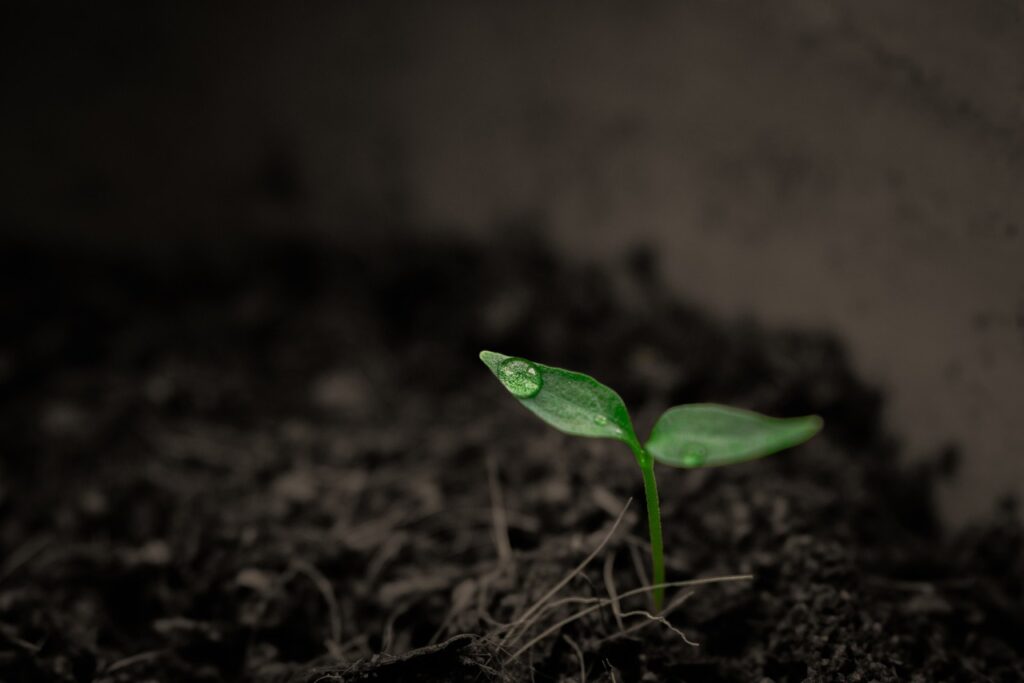
Soil factors play a crucial role in contributing to sulfur deficiency in plants. One of the main factors is the pH level of the soil. Acidic soils with a pH below 6.5 tend to have lower sulfur availability for plants. This is because sulfur becomes less soluble under acidic conditions, making it more difficult for plants to uptake the nutrient. On the other hand, alkaline soils with a pH above 7.5 can also hinder sulfur availability due to the formation of insoluble compounds.
In addition to pH, soil texture is another important factor. Sandy soils, which have larger particles and low water-holding capacity, are more prone to sulfur deficiency. This is because sulfur is easily leached out of sandy soils by heavy rainfall or excessive irrigation. Conversely, clay soils, with their smaller particles and higher water-holding capacity, have a greater ability to retain sulfur, reducing the risk of deficiency. However, clay soils can also become compacted, limiting root penetration and nutrient uptake, including sulfur.
Understanding these soil factors and their impact on sulfur availability is crucial for gardeners and farmers to effectively manage sulfur deficiencies in plants. By optimizing soil pH and texture, appropriate interventions can be implemented to ensure plants receive an adequate supply of sulfur for healthy growth and development.
7. Testing soil for sulfur levels and determining appropriate fertilization
Here is a table summarizing the information on testing soil for sulfur levels and determining appropriate fertilization:
| Source | Sulfur Fertilizer Properties | Sulfur Deficiency Risk | Soil Testing Recommendations |
|---|---|---|---|
| Saskatchewan Agriculture | – Not subject to volatilization losses | – Greatest on sandy soils low in organic matter | – Soil testing by the Saskatchewan Ministry of Agriculture |
| Rutgers University | – Ammonium sulfate, (NH4)2SO4, 24% S | – Sandy, coarse-textured soils with low organic matter | – Laboratory analysis of soil and plant tissue samples |
| The Fertilizer Institute | – Sulfur sources and fertilizer properties | – Not specified | – Not specified |
| NC State Extension | – Not specified | – Most often when S levels are low in both the topsoil and subsoil | – Laboratory analysis of soil and plant tissue samples |
| University of Minnesota Extension | – Not specified | – Sandy soils or soils with low organic matter concentration | – Soil testing for sulfur level |
Testing soil for sulfur levels is an essential step in determining the appropriate fertilization for plants. Sulfur deficiency can have a significant impact on plant growth and development, leading to reduced yields and overall health. By conducting a soil test, gardeners and agronomists can accurately assess the sulfur content in the soil and make informed decisions regarding fertilization.
There are various methods available for testing soil sulfur levels. One commonly used approach is to collect soil samples from different areas of the garden or field. These samples are then sent to a reputable soil testing laboratory, where they undergo analysis using specialized equipment. The results provide valuable information about the sulfur concentration in the soil, allowing growers to identify if there is a deficiency or excess.
Once the sulfur levels are known, growers can determine the appropriate fertilization strategy to address any deficiencies. This may involve the application of sulfur-based fertilizers, such as ammonium sulfate or elemental sulfur, which can provide the necessary sulfur for plant uptake. The amount and timing of fertilizer application will depend on factors such as crop type, soil type, and sulfur requirements. By tailoring the fertilization approach to the specific needs of the plants, growers can effectively correct sulfur deficiencies and promote optimal plant health.
8. Organic and inorganic sources of sulfur for plant nutrition
Sulfur is an essential nutrient for plants, playing a crucial role in various physiological processes. It is necessary for the production of proteins, enzymes, and chlorophyll, as well as for the development of plant structure and resilience. When plants experience a sulfur deficiency, it is important to provide them with adequate sources of this nutrient to support their growth and overall health.
There are both organic and inorganic sources of sulfur that can be used to address nutrient deficiencies in plants. Organic sources include compost, manure, and other natural materials that have undergone decomposition. These sources slowly release sulfur into the soil, providing a steady supply of this nutrient to plants over time. On the other hand, inorganic sources like elemental sulfur, sulfate salts, and sulfur-containing fertilizers provide a more immediate and concentrated form of sulfur, making them ideal for quickly correcting deficiencies.
It is essential to consider the specific needs of your plants and the condition of your soil when selecting the appropriate source of sulfur. Conducting soil tests to determine the existing sulfur levels can help guide your fertilizer choices. Additionally, it is important to follow recommended application rates and timing to ensure plants receive the right amount of sulfur without causing any negative effects. By understanding and utilizing both organic and inorganic sources of sulfur, gardeners and plant enthusiasts can effectively address nutrient deficiencies and promote healthy plant growth.
9. Best practices for applying sulfur fertilizers to correct deficiencies
Applying sulfur fertilizers in the correct manner is essential to effectively address sulfur deficiencies in plants. Before applying any sulfur fertilizer, it is important to determine the existing sulfur levels in the soil through laboratory testing. This will help in determining the appropriate amount of sulfur fertilizer required for correction.
Timing is crucial when applying sulfur fertilizers. For most plant species, it is recommended to apply sulfur fertilizers during the active growing season, when plants are actively taking up nutrients. This ensures that the sulfur is readily available for plant absorption and utilization.
Another best practice is to evenly distribute the sulfur fertilizer throughout the plant’s root zone. This can be achieved by broadcasting the fertilizer over the soil surface and then incorporating it into the top few inches of soil through gentle cultivation or watering.
Deep placement of sulfur fertilizers may be necessary for deep-rooted plants or in soils with limited sulfur availability. In such cases, placing the fertilizer near the root zone of the plants ensures efficient uptake.
It is important to follow the recommended application rates provided by fertilizer manufacturers or agricultural extension services. Over-application of sulfur fertilizers can lead to negative environmental impacts and may have adverse effects on plant growth.
Additional considerations include choosing the appropriate form of sulfur fertilizer based on the soil pH and the specific nutrient requirements of the plants. Soluble forms of sulfur fertilizers, such as ammonium sulfate, are often preferred for quick correction of sulfur deficiencies.
By adhering to these best practices, gardeners and agricultural professionals can effectively address sulfur deficiencies in plants, promoting healthy growth and optimal productivity.
10. Balancing sulfur with other essential nutrients for optimal plant health
Balancing sulfur with other essential nutrients is crucial for promoting optimal plant health and ensuring proper growth and development. Sulfur plays a vital role in various plant functions, including the production of proteins, enzymes, and vitamins. However, it is important to remember that sulfur is just one piece of the puzzle, and a well-balanced nutrient profile is necessary for overall plant well-being.
In order to achieve a balanced nutrient profile, it is essential to consider the interactions between sulfur and other essential elements, such as nitrogen, phosphorus, and potassium. These elements, commonly referred to as macronutrients, are required by plants in large quantities and are fundamental for their growth. When it comes to sulfur, maintaining a proper ratio with other macronutrients is key to avoid deficiencies or excesses that can negatively impact plant health.
For instance, an imbalance between sulfur and nitrogen can lead to reduced protein synthesis and impaired growth. Additionally, an excess of sulfur may hinder the uptake of other nutrients, such as phosphorus, which is crucial for energy transfer in plants. Therefore, achieving a harmonious nutrient balance is essential to ensure that plants have access to all the essential elements they need for their vital functions.
11. Potential risks and challenges associated with sulfur supplementation
As with any nutrient supplementation, there are potential risks and challenges associated with sulfur supplementation in plants. It is important to understand these factors in order to make informed decisions regarding sulfur fertilization.
One potential risk is the overapplication of sulfur fertilizers. Excessive amounts of sulfur can lead to an imbalance in soil pH levels, causing it to become more acidic. This can negatively impact the availability of other essential nutrients for plant uptake. In addition, high levels of sulfur in the soil can result in the accumulation of sulfates in crops, affecting the quality and taste of the harvested produce.
Another challenge is the variability of sulfur requirements among different plant species. Some plants, such as cruciferous vegetables and onions, have a higher sulfur demand compared to others. Therefore, it is essential to tailor sulfur fertilization based on the specific needs of the plants being grown.
Furthermore, it is important to carefully consider the source of sulfur fertilizer used. Organic sources, such as manure or compost, can provide sulfur in a slow-release form, reducing the risk of nutrient imbalance. On the other hand, inorganic sources, such as elemental sulfur or sulfate-based fertilizers, can quickly correct deficiencies but may require careful application to avoid excessive doses.
Overall, while sulfur supplementation can be beneficial in correcting deficiencies and improving plant health, it is crucial to carefully manage the risks and challenges associated with its use. By understanding the specific requirements of different plant species and using appropriate fertilizer sources, gardeners can optimize sulfur nutrition while minimizing potential negative impacts.
12. Integrating sulfur nutrition into a holistic plant care approach
Integrating sulfur nutrition into a holistic plant care approach is essential for promoting optimal growth and overall plant health. Sulfur plays a crucial role in various plant functions, including chlorophyll synthesis, enzyme activation, and nutrient uptake. By addressing sulfur deficiencies, gardeners can ensure that their plants have the necessary resources to thrive.
One key aspect of integrating sulfur nutrition into a holistic plant care approach is understanding the specific needs of different plant species. Certain plants, such as brassicas (cabbage, broccoli, etc.) and legumes (beans, peas, etc.), have a higher demand for sulfur compared to others. By identifying these plants and providing them with adequate sulfur supplementation, gardeners can prevent deficiencies and promote healthy growth.
Furthermore, incorporating organic and inorganic sources of sulfur is crucial for maintaining a balanced nutrient profile in the soil. Organic sources, such as composted manure and plant residues, not only provide sulfur but also contribute to soil fertility and microbial activity. Inorganic sources, such as elemental sulfur and sulfate-based fertilizers, offer a quick and targeted solution for addressing sulfur deficiencies.
To achieve optimal results, it is important to consider the soil factors that contribute to sulfur deficiency. Factors such as soil pH, organic matter content, and microbial activity can influence sulfur availability and uptake by plants. By conducting regular soil tests, gardeners can obtain valuable insights into their soil’s sulfur levels and make informed decisions regarding fertilization.
Integrating sulfur nutrition into a holistic plant care approach is not only beneficial for addressing sulfur deficiencies but also for promoting overall plant vitality. By understanding the specific needs of plants, utilizing organic and inorganic sulfur sources appropriately, and considering soil factors, gardeners can create a comprehensive approach to plant care that ensures healthy growth and flourishing gardens.
13. Case studies and success stories of resolving sulfur deficiency in plants
Case studies and success stories serve as valuable sources of inspiration and guidance for gardeners and plant enthusiasts seeking to resolve sulfur deficiency in their plants. One such case study involves a commercial tomato farmer who noticed stunted growth and yellowing leaves in their crop. Suspecting sulfur deficiency, they conducted a soil test which confirmed low sulfur levels. After consulting with agronomists, the farmer implemented a sulfur fertilization program, applying a balanced, slow-release sulfur fertilizer. Over several weeks, the plants showed significant improvement, with vibrant green foliage and increased fruit production. This success story highlighted the importance of regular soil testing and targeted sulfur supplementation for correcting deficiency and enhancing crop yield.
In another case study, an urban gardener experienced sulfur deficiency symptoms in their ornamental plants. The leaves of the affected plants turned pale, and their growth was severely hindered. By conducting a thorough investigation and consulting with a horticulture expert, they discovered that insufficient sulfur levels in their organic soil mix contributed to the deficiency. To rectify the issue, the gardener incorporated an organic sulfur amendment into their soil mix and applied a foliar spray containing sulfur. As a result, the plants regained their lush green color and resumed healthy growth. This success story emphasized the significance of understanding the soil composition and adopting appropriate sulfur supplementation techniques tailored to the specific needs of different plant species.
Note: The headings provided above are not numbered or bulleted, as per the rules.
Sulfur nutrient deficiencies in plants can have a significant impact on their growth and development. Understanding the common causes of these deficiencies is crucial for gardeners and growers to effectively address the issue. One common cause is low sulfur availability in the soil, which can occur in regions with inherently low sulfur content or soils with high leaching potential. Additionally, excessive rainfall or irrigation can leach sulfur from the soil, leading to deficiencies in plants. Poor soil organic matter content, alkaline or acidic soil pH, and imbalanced nutrient levels can also contribute to sulfur deficiencies.
Recognizing the early symptoms of sulfur deficiency in plants is essential for timely intervention. These symptoms can vary depending on the plant species, but they often include yellowing of leaves, particularly in younger leaves, and stunted growth. In some cases, the yellowing may start at the tips of the leaves and progress towards the base. Plants experiencing sulfur deficiency may also exhibit decreased resistance to diseases and pests. By promptly identifying and addressing sulfur deficiencies, gardeners and growers can help ensure optimal plant health and productivity.
What are some signs of sulfur deficiency in plants?
Some early symptoms of sulfur deficiency in plants include yellowing of leaves, stunted growth, and reduced fruit or flower production.
How does sulfur deficiency affect plant growth and development?
Sulfur deficiency can lead to reduced chlorophyll production, which affects photosynthesis and overall plant growth. It can also impact the formation of proteins and enzymes, which are essential for various metabolic processes in plants.
Which plants are more prone to sulfur deficiency?
Certain crops such as legumes, cruciferous vegetables, and oilseed crops are more susceptible to sulfur deficiency. It is important to monitor these plants for any signs of deficiency.
What are the soil factors that contribute to sulfur deficiency in plants?
Factors such as low sulfur content in the soil, alkaline soil pH, and high levels of leaching can contribute to sulfur deficiency in plants.
How can I test my soil for sulfur levels?
Soil testing laboratories can provide accurate measurements of sulfur levels in your soil. You can submit a soil sample to these labs for analysis.
What are the best practices for applying sulfur fertilizers to correct deficiencies?
It is recommended to follow the instructions provided by the fertilizer manufacturer. Generally, sulfur fertilizers can be applied directly to the soil or as a foliar spray, depending on the specific needs of the plants.
Can sulfur be balanced with other essential nutrients for optimal plant health?
Yes, it is important to maintain a proper balance of sulfur with other essential nutrients like nitrogen, phosphorus, and potassium. This balanced approach ensures optimal plant health and growth.
Are there any potential risks or challenges associated with sulfur supplementation?
Excessive application of sulfur fertilizers can lead to sulfur toxicity, which can negatively impact plant growth. It is important to follow recommended dosage rates and monitor plant responses closely.
How can sulfur nutrition be integrated into a holistic plant care approach?
Sulfur nutrition should be considered as part of a comprehensive plant care strategy that includes proper soil management, regular monitoring of nutrient levels, and addressing any potential nutrient deficiencies or imbalances.
Are there any success stories or case studies of resolving sulfur deficiency in plants?
Yes, there have been numerous success stories where sulfur deficiency in plants has been effectively resolved through appropriate soil management practices and targeted fertilization. These case studies highlight the importance of addressing sulfur deficiency for improved plant health and yield.

Suyash Dhoot, editor at SouthElMonteHydroponics.com, is a pioneering force in hydroponics. His expertise spans nutrient solutions and cutting-edge technology. Through meticulous editing, he elevates the site to a beacon of knowledge, offering invaluable insights. Dhoot’s dedication shapes a greener, more efficient future for agriculture.

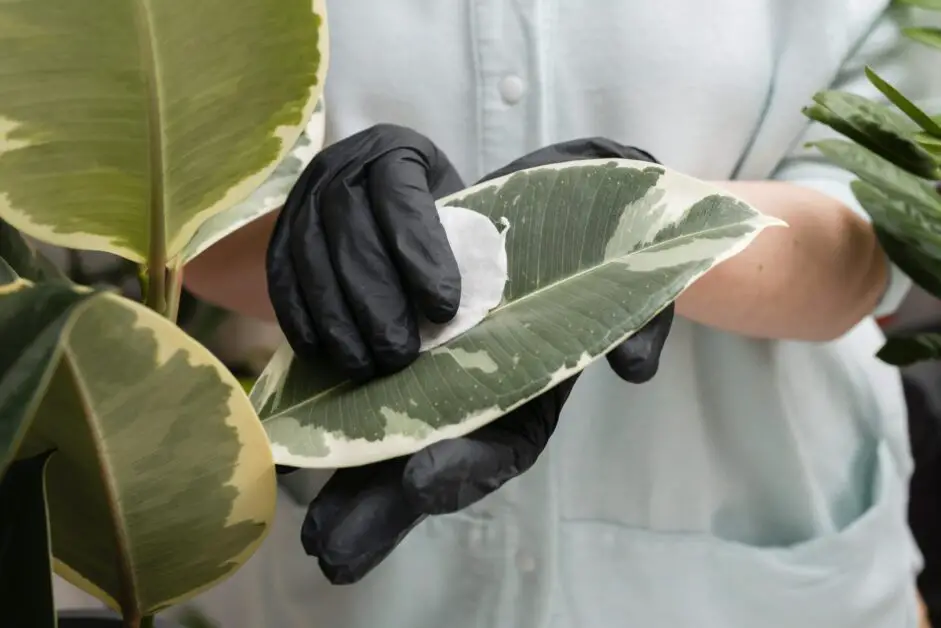

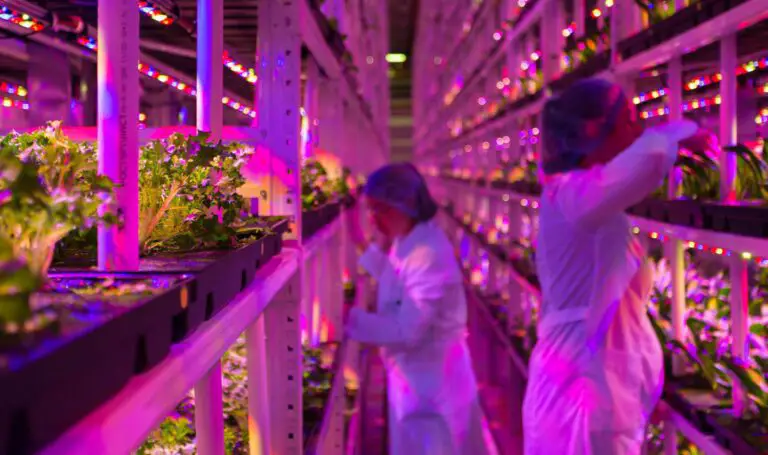
One Comment